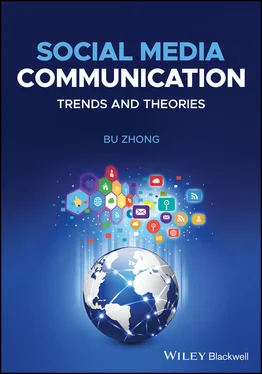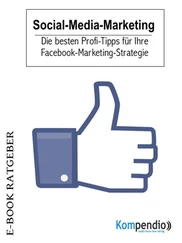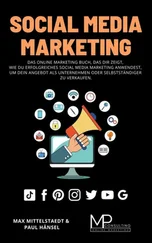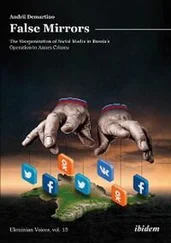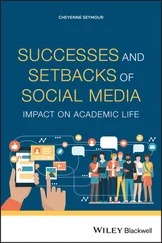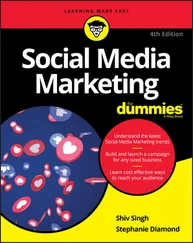Social Media Communication
Trends and Theories
Bu Zhong
The Pennsylvania State University University Park, PA

This edition first published 2022
© 2022 John Wiley & Sons, Inc.
All rights reserved. No part of this publication may be reproduced, stored in a retrieval system, or transmitted, in any form or by any means, electronic, mechanical, photocopying, recording or otherwise, except as permitted by law. Advice on how to obtain permission to reuse material from this title is available at http://www.wiley.com/go/permissions.
The right of Bu Zhong to be identified as the author of this work has been asserted in accordance with law.
Registered Office
John Wiley & Sons, Inc., 111 River Street, Hoboken, NJ 07030, USA
Editorial Office
The Atrium, Southern Gate, Chichester, West Sussex, PO19 8SQ, UK
For details of our global editorial offices, customer services, and more information about Wiley products visit us at www.wiley.com.
Wiley also publishes its books in a variety of electronic formats and by print-on-demand. Some content that appears in standard print versions of this book may not be available in other formats.
Limit of Liability/Disclaimer of Warranty
While the publisher and authors have used their best efforts in preparing this work, they make no representations or warranties with respect to the accuracy or completeness of the contents of this work and specifically disclaim all warranties, including without limitation any implied warranties of merchantability or fitness for a particular purpose. No warranty may be created or extended by sales representatives, written sales materials or promotional statements for this work. The fact that an organization, website, or product is referred to in this work as a citation and/or potential source of further information does not mean that the publisher and authors endorse the information or services the organization, website, or product may provide or recommendations it may make. This work is sold with the understanding that the publisher is not engaged in rendering professional services. The advice and strategies contained herein may not be suitable for your situation. You should consult with a specialist where appropriate. Further, readers should be aware that websites listed in this work may have changed or disappeared between when this work was written and when it is read. Neither the publisher nor authors shall be liable for any loss of profit or any other commercial damages, including but not limited to special, incidental, consequential, or other damages.
Library of Congress Cataloging-in-Publication Data
Names: Zhong, Bu, author.
Title: Social media communication : trends and theories / Bu Zhong, The Pennsylvania State University, University Park, PA.
Description: Hoboken, NJ : John Wiley & Sons, Inc., 2022. | Includes bibliographical references and index.
Identifiers: LCCN 2021009900 (print) | LCCN 2021009901 (ebook) | ISBN 9781119041610 (paperback) | ISBN 9781119041603 (adobe pdf) | ISBN 9781119041597 (epub)
Subjects: LCSH: Social media. | Communication.
Classification: LCC HM742 .Z47 2022 (print) | LCC HM742 (ebook) | DDC 302.23/1--dc23
LC record available at https://lccn.loc.gov/2021009900
LC ebook record available at https://lccn.loc.gov/2021009901
Cover image: © Karoon Cha/Shutterstock
Cover design by Wiley
Set in 9.5/12.5 STIXTwo Text by Integra Software Services, Pondicherry, India
1 Cover
2 Title page Social Media Communication Trends and Theories Bu Zhong The Pennsylvania State University University Park, PA
3 Copyright
4 Preface
5 Part I: Theoretical Foundation of Social Media Use Chapter 1: Why Study Social Media?OverviewThe Power of Social MediaSocial Media in a Time of DistrustThe “Us vs. Them” MentalityDigitization and DigitalizationAdoption Models of Media TechnologiesTheory Highlight: Construal Level TheorySummaryLooking AheadDiscussionReferences Chapter 2: Media Technology and Human CivilizationOverviewDefinition of Social MediaDefinition of TechnologyFour Eras of Human CivilizationTheory Highlight: Technology DeterminismSummaryLooking AheadDiscussionReferences Chapter 3: Social Media and Computer-Mediated CommunicationOverviewSocial ChangeComputer-Mediated CommunicationVerbal and Nonverbal CuesInterpersonal CommunicationUncertainty Reduction TheorySocial Information Processing TheoryICT and CommunicationPopularity of Social MediaGroup CommunicationInformation SeekingTheory Highlight: Uses and Gratifications TheorySummaryLooking AheadDiscussionReferences Chapter 4: Social Media, Judgment, and Decision MakingOverviewMedia Technology and Brain ActivityJudgment and Decision-Making ResearchSelective ExposureJDM and Social EndorsementThe Power of Social ContextSocial Media for Patient SupportTheory Highlight: Cognitive Dissonance TheorySummaryLooking AheadDiscussionReferences Chapter 5: Social Media and BehaviorOverviewSocial Media and News ConsumptionSocial Media and Health BehaviorThe Culture of SharingKnowledge CollaborationTheory Highlight: Social Cognitive TheorySummaryLooking AheadDiscussionReferences Chapter 6: Social Media and Privacy ConcernOverviewInternet Privacy ConcernScholarly Perspectives Toward IPCFour EpochsSocial Media SurveillanceGeneration Gap in IPCPrivacy Concern at the WorkplacePrivacy Risks and Coping StrategiesTheory Highlight: Need for CognitionSummaryLooking AheadDiscussionReferences Chapter 7: Social Media and CultureOverviewCultural DiversityFive Dimensions of Cultural DifferencesCultural EvolutionCultural Influence on Social Media UsageCultural Differences in Social Media ActivitiesTheory Highlight: Cultivation TheorySummaryLooking AheadDiscussionReferences Chapter 8: Problematic Use of Social MediaOverviewWarm Feelings in Social Media UseMechanism of PUSMReward System and Self-ControlFOMO and PhubbingCyber Troops and Social Media ManipulationRelief of PUSMTheory Highlight: Third-Person EffectSummaryLooking AheadDiscussionReferences
6 Part II: Social Media for Social Change Chapter 9: Business Use of Social MediaOverviewBusiness Adoption of ICTBusiness Use of Social Media and BenefitsVirtual Customer EnvironmentWork PerformanceSocial CapitalInformation Benefits in Social NetworksGovernment Use of Social MediaTheory Highlight: Social Network TheorySummaryLooking AheadDiscussionReferences Chapter 10: Social Media Reshape the News IndustryOverviewNews Consumption Habit ChangeThe Power of News MediaNews Decision MakingThe Power of Facebook AlgorithmsFake News and MisinformationDeclining Trust in News MediaNews Media and Social Media GiantsTheory Highlight: Agenda-Setting TheorySummaryLooking AheadDiscussionReferences Chapter 11: Social Media and HealthcareOverviewHealth Information on Social MediaPatients’ Use of Social MediaHealth Professionals’ Use of Social MediaValues of Social Media Support GroupsHealth Information SupportTrust in DoctorsTheory Highlights: Health Belief Model and Crisis and Emergency Risk Communication ModelSummaryLooking AheadDiscussionReferences Chapter 12: The App Economy and Artificial IntelligenceOverview1. The App EconomyApps Promote BusinessThe App IntelligenceApp Store OptimizationTrends of App DevelopmentTrends of Mobile Commerce AppsDiscussionReferencesOverview2. Artificial IntelligenceAI Helps Social Media PenetrationAI-Powered Business SolutionsThe Algorithm ExperienceSocial Media and AIAI Empowers MarketersTheory Highlight: Knowledge Gap HypothesisSummaryLooking AheadDiscussionReferences Chapter 13: Social Media and Social MovementOverviewSocial Media Speed Up Social MovementsNew Path to Social PowerMobilization and Coalition BuildingNetworked PublicsSocial Media and DemocracyTheory Highlight: Diffusion of Innovation TheorySummaryLooking AheadDiscussionReferences Chapter 14: The Future of Social MediaOverviewYoung and Old FishTwo PremisesThe Model of Two-Stage DevelopmentDigital Skills at the WorkplaceEthical Social Media SitesFake News on Social MediaSocial ConnectivitySummaryDiscussionReferences
Читать дальше
